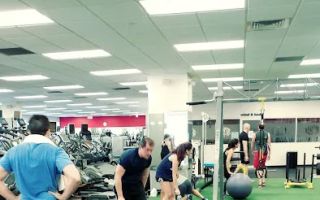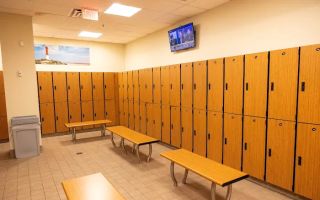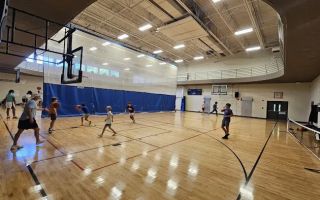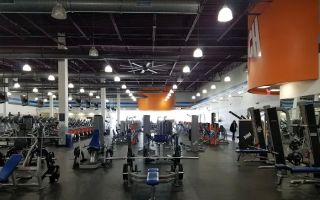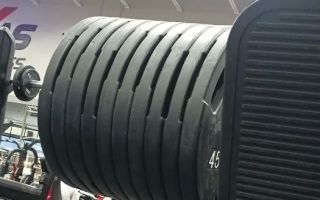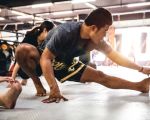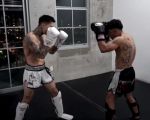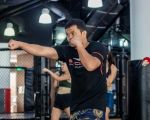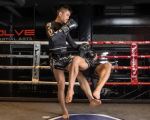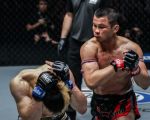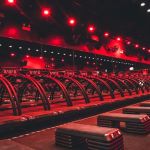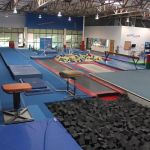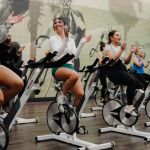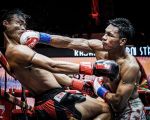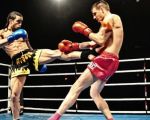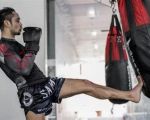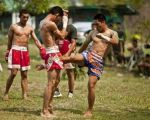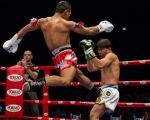The Importance of Flexibility for Muay Thai Fighters
In the world of Muay Thai, flexibility is a critical aspect of a fighter's skill set. Many beginners overlook its importance, focusing more on strength and speed. However, the best Muay Thai fighters understand that being flexible is just as crucial to their performance. Flexibility allows for more fluid, powerful strikes, improved defensive movements, and a greater range of motion, which can make all the difference in the ring.
Muay Thai requires a combination of strength, endurance, speed, and flexibility. Without proper flexibility, a fighter may struggle with executing high kicks, jumping knees, or even defensive movements like dodging attacks. That’s why incorporating flexibility exercises into your training routine is essential to stay competitive and injury-free.
Top Muay Thai Flexibility Exercises
Flexibility exercises for Muay Thai fighters should target key areas such as the hips, hamstrings, shoulders, and groin. These regions are crucial for delivering powerful kicks and maintaining a wide range of motion. Below are some of the best flexibility exercises to incorporate into your daily routine:
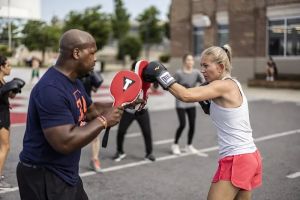
Under Armour Performance Center
11270 Pepper Rd, Hunt Valley, MD 21031, USA
1. Dynamic Leg Swings
Leg swings are an excellent way to increase hip flexibility, which is essential for high kicks. Stand next to a wall or support, and swing one leg forward and backward while keeping it straight. Gradually increase the range of motion. This exercise also warms up the hip flexors and hamstrings.
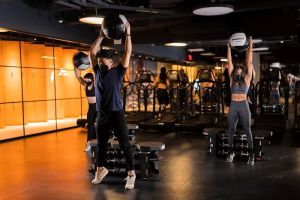
Performance Lab LIC
28-17 42nd Rd, Long Island City, NY 11101, USA
2. Butterfly Stretch
This stretch targets the groin and hip flexors. Sit on the floor with your feet together, soles touching, and gently press your knees down toward the floor. Hold the stretch for 20-30 seconds, focusing on deep breathing.
3. Lunge with a Twist
The lunge with a twist stretches the hips, groin, and the lower back. Start in a standing position and step one leg forward into a lunge. Once in position, twist your upper body toward the side of your forward leg. This exercise helps improve mobility and balance while preparing the body for dynamic movement.
4. Shoulder Stretch
For a Muay Thai fighter, flexibility in the shoulders is crucial for powerful elbows and blocking strikes. Stand tall and extend one arm across your chest. Use the other arm to pull the extended arm closer to your chest, feeling the stretch in your shoulder and upper back. Hold for 20-30 seconds and repeat on the other side.
5. Pigeon Pose
The pigeon pose is a yoga stretch that targets the hips and glutes, important for kicking and movement. Start in a tabletop position and bring one leg forward so that your knee is near your wrist. Stretch the opposite leg out behind you and lower your body toward the ground. Hold for 20-30 seconds on each side.
Real-Life Case: How Flexibility Transformed a Fighter's Game
Flexibility is not just a theory – it’s a proven strategy in combat sports. Take, for instance, the story of one of the top fighters in Muay Thai, who was known for his unorthodox fighting style. This fighter struggled with low kicks and defensive movements early in his career. His coach noticed this and recommended adding flexibility exercises to his routine. Within weeks, he saw a significant improvement. His leg kicks became faster and higher, his dodging abilities improved, and his overall performance in the ring reached a new level. This is a perfect example of how flexibility can make a fighter’s movements more effective and versatile.
How to Implement Flexibility Training into Your Routine
Implementing a flexibility training program into your Muay Thai routine doesn’t have to be overwhelming. Here are some tips to get started:
1. Consistency is Key
Flexibility training requires regular practice. Incorporate stretches into your warm-up and cool-down routine. Dedicate 10-15 minutes before and after each training session to flexibility exercises to see improvement over time.
2. Start Slowly
If you're new to stretching, start with basic exercises and gradually increase the intensity and duration. Don’t push yourself too hard, as overstretching can lead to injury. Focus on breathing deeply during each stretch to help relax your muscles.
3. Incorporate Yoga or Pilates
Yoga and Pilates are great cross-training methods that help improve flexibility, balance, and core strength. Many Muay Thai fighters swear by yoga to improve their flexibility while increasing body awareness and mental focus.
Choosing the Right Tools and Gear for Flexibility Training
While flexibility training doesn't require a lot of equipment, a few tools can help enhance your practice. Stretching straps or resistance bands are great for improving range of motion. A yoga mat can also provide comfort while performing stretches on the floor. Additionally, foam rollers are excellent for relieving tight muscles and improving flexibility after intense training sessions.


